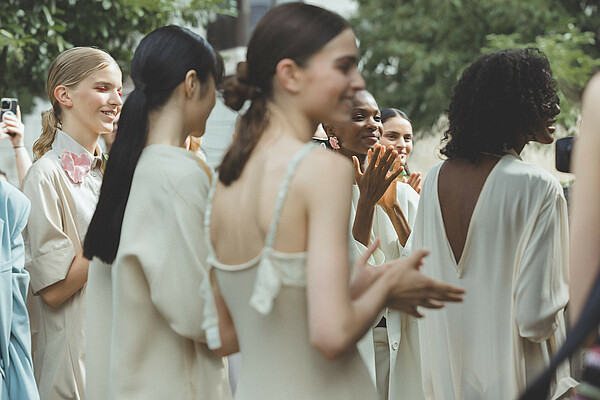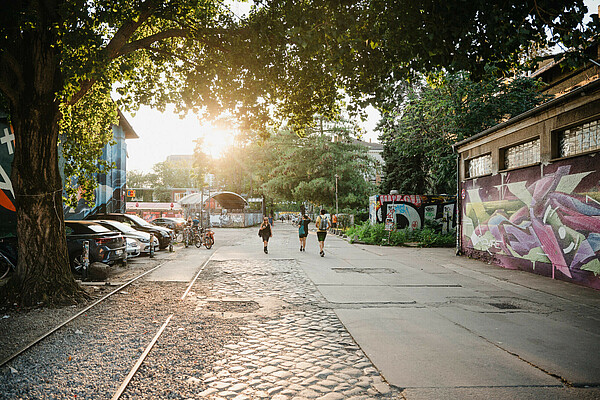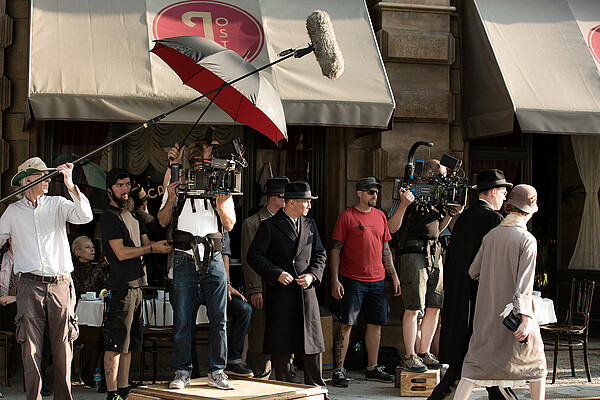Preserving Legacies
Berlin’s Three Historic Sites of Outstanding Value to Humanity.
Heritage refers to the history, traditions, practices, or artefacts and buildings of a particular country, society, or social group that remain from the past and are considered important enough to preserve for the future.
The United Nations Educational, Scientific and Cultural Organization’s primary mission is to build peace through international cooperation in education, the sciences and culture. By promoting cultural heritage and the equal dignity of all cultures, UNESCO seeks to strengthen bonds among nations, propagating the values of the humanist tradition.
One of the ways UNESCO achieves this is by maintaining heritage lists. There are in fact two of them, one for intangible cultural practices and expressions such as crafts and arts, and one for cultural “properties”, meaning physical and geographically identifiable places or things. To be recognised as either by UNESCO is considered a great honor, implying as it does that the practice or site concerned is of outstanding value to humanity.
There are less than 1200 such World Heritage sites in the entire world. Berlin has three of them.
The Palaces and Parks of Potsdam and Berlin
Berlin’s first UNESCO heritage site covers over 500 hectares spanning from Berlin’s outer district Zehlendorf into Potsdam, capital of the neighboring state Brandenburg. It is an area of parks and palaces built between 1730 and 1916, and especially associated with 18th century Prussian king and military leader Friedrich (Frederick) II of the house of Hohenzollern. “Old Fritz”, as he is sometimes fondly referred to, had a long reign of 46 years, during which he was not exactly a pacifist. But he is remembered most for two things:
- introducing potatoes to the country – people to this day still lay potatoes at his simple tomb
- commissioning his favorite residence, the palace Sanssouci (court language at the time was French, and Sanssouci means “without cares” or “no worries”).
The rococo summer palace along with the gardens and park is now a major tourist attraction visited by more than two million people a year from all over the world. Sansoucci and the other former imperial palaces in and around Berlin are cared for by the Prussian Palaces and Gardens Foundation Berlin-Brandenburg.
Next to Sansoucci, the UNESCO site covers the ensemble of parks as a single cultural property also including the New Garden, the Park of Babelsberg, Sacrow Castle and Park with the Royal Forest around the village of Sacrow, the Lindenallee Avenue west of the New Palace, the Former Gardener’s Training School, the former Railway Station of the Emperor and its environs, Lindstedt Palace and surroundings, the Seekoppel paddock, the Mirbach Wäldchen Grove, the Villa Henkel with garden, Pfingstberg Hill, the garden at the Villa Alexander, the Babelsberg Observatory, the Russian colony Alexandrowka with the Kapellenberg, the artificial Italian village of Bornstedt and the artificial Swiss village in Klein-Glienicke. Within Berlin, Glienicke Park, the Glienicke Hunting Lodge, Böttcherberg Hill and the Alexandra Loggia, and Peacock Island (including all buildings thereon) are all considered part of the site.
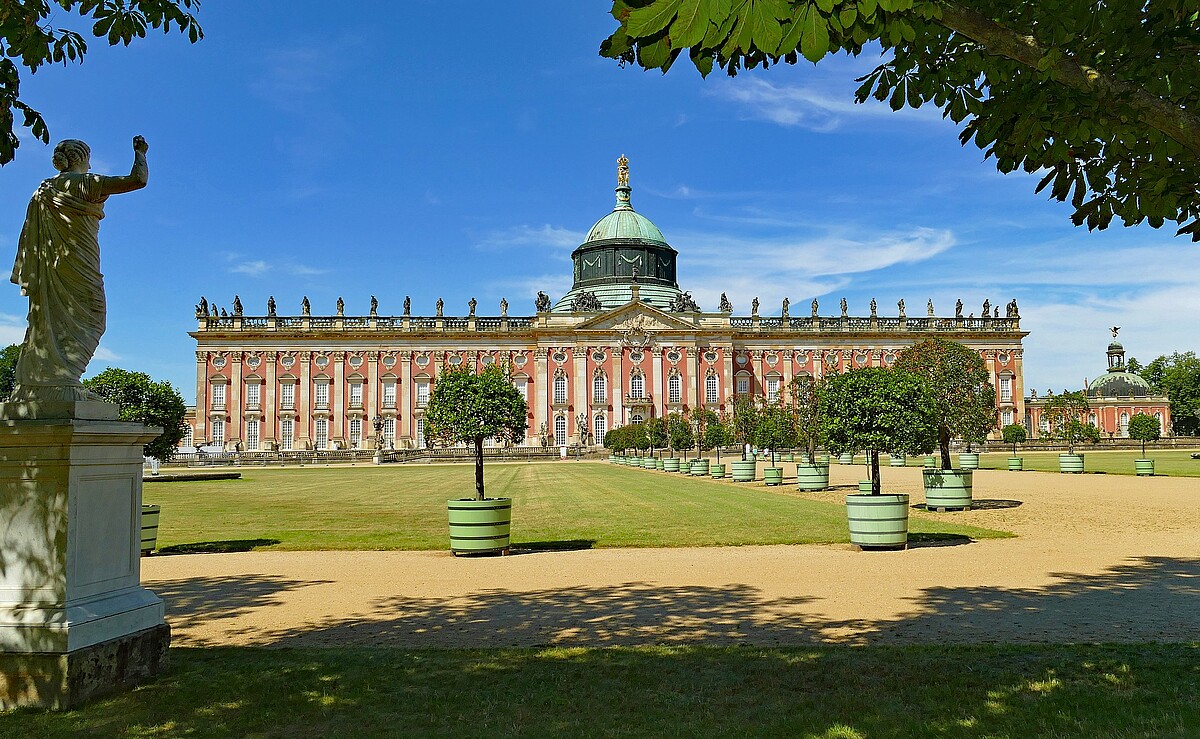
The whole complex of architectural creations and landscaping development features a highly eclectic mix of styles by a variety of great architects and craftsmen including Peter Joseph Lenné (1789-1866) for the overall plan, and G.W. von Knobelsdorff (1699-1753), C. von Gontard (1731-1791), C.G. Langhans (1732-1808), and K.F. Schinkel (1781-1841). Restoration and renovation is carried out conscientiously and responsibly, always based on intensive preliminary studies and research. The number of visitors allowed into the various palaces, parks and museum buildings is regulated by conservation and preservation guidelines. Building activities within and outside the sites are also regulated to ensure the lasting protection and sustained preservation of the visual and structural integrity of the property and the immediate surroundings.
Berlin Modernism Housing Estates from the Twenties
The 1920s are sometimes called the Golden Twenties. They were cut short by the New York Stock Exchange crash in October 1929, the cause of the world-wide economic crisis that hit Germany, the “Weimar Republic”, particularly hard. The federal constitutional Weimar Republic lasted from 1918 to 1933 and was a period noted for progressive social, political and cultural development.
Up to 1929 the Republic enjoyed increasing stability and prosperity, introducing a number of measures designed to make life easier and safer for ordinary people: a maximum work week of 48 hours, a half-holiday on Saturdays, health insurance, tax reforms including increases in taxes on capital and an increase in the highest income tax rate, veterans' aid for the disabled and their dependents, social services, child protection, the right to education for all children, a modern public assistance programme, accident insurance in relation to certain kinds of work, unemployment benefits and a national unemployment insurance program, as well as laws to regulate rents and increase protection for tenants. It was in this environment that housing construction was also greatly accelerated, with over 2 million new homes constructed or modernised between 1924 and 1931.
Six of the best examples of such housing estates are on the UNESCO World Heritage list. They were designed by noted architects such as Bruno Taut, Martin Wagner and Walter Gropius, and today are still considered desirable residences:
- The Horseshoe Estate in Neukölln
- The Weisse Stadt in Reinickendorf
- The Carl Legien Estate in Pankow
- The Siemensstadt Ring Estate in Spandau
- Gartenstadt Falkenberg
- Siedlung Schillerpark
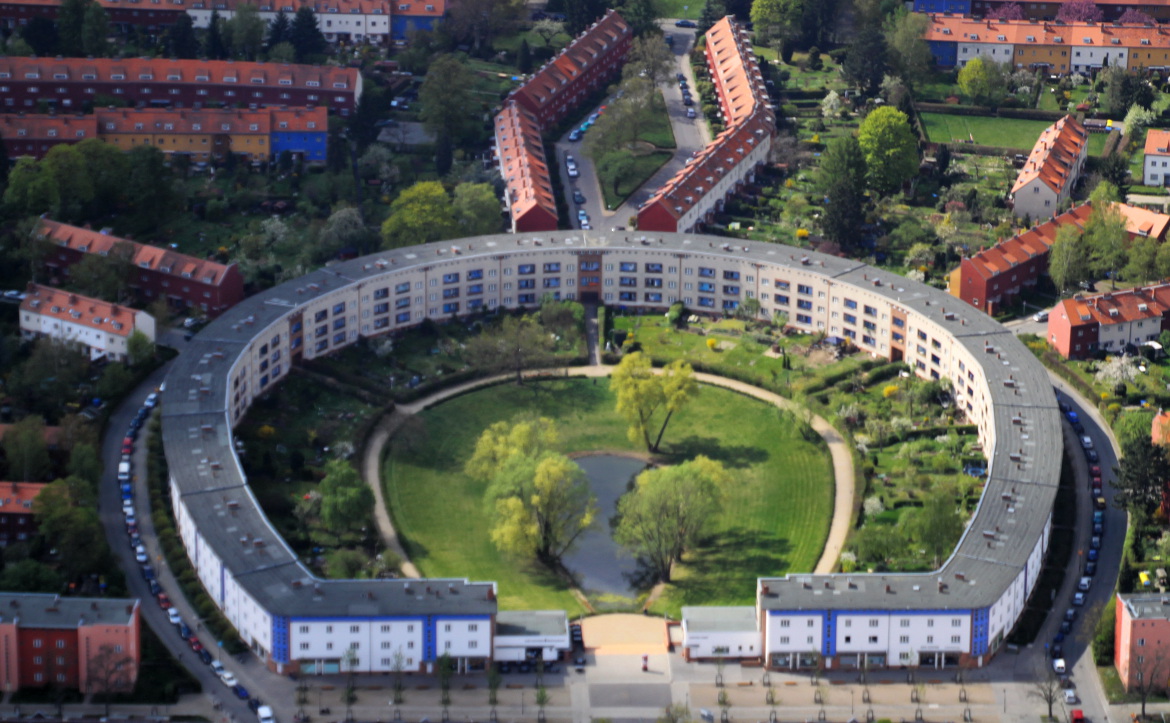
These new buildings mostly have a straight-lined, geometrical, and minimalist style, and the estates are heavily influenced by the then modern type of architecture taught at “Bauhaus” schools. This movement reflected the new ideas of the time and constituted a building reform that contributed to improving housing and living conditions for the general population. The advanced approaches to town planning, architecture and also garden design produced state-of-the-art, affordable apartments with kitchens, bathrooms and balconies, terraced houses with their own gardens, and apartment buildings open to light, air and sun instead of dingy urban backyards. The change towards functional as well as aesthetic architecture had considerable influence on housing all over the world.
Due to their non-central locations, these six estates suffered comparatively little damage during World War II. Restoration and their current state of conservation display a high level of integrity and authenticity. The Horseshoe Estate in particular is a bit of a tourist attraction even today, a hundred years on.
The Museumsinsel (Museum Island)
Altkölln, or old Cölln, is all but forgotten, although new Cölln a little to the south - that is, the district of Neukölln - is flourishing. Altkölln had a city moat which in the 13th century served as a waterway while the river was impassable for boats. The river that flows through Berlin is the Spree, and the Altkölln moat went on to become the Spree canal.
Today, the river and the 2 kilometer canal that loops off it right in the centre of town form an island, the northern end of which is known as the Museum Island. This area is home to five museums originally conceived in 1824 and completed by 1930. The project of placing lots of major museums in one central place is considered one of the most visionary approaches to museum design in the 20th century.
Each museum aims to establish an organic connection with the art it houses. The museum’s collections trace the development of civilizations throughout the ages, and their importance is enhanced by the urban unity and architectural quality of the buildings.
The five museums are:
- The Pergamon Museum
- The Bode Museum
- The Neues (New) Museum
- The Old National Gallery (Alte Nationalgalerie)
- The Altes (Old) Museum
Also on the island is the James Simon Gallery. Taken together, they are “one of the significant and most impressive ensembles in the world”, according to the UNESCO. Karl Friedrich Schinkel, Prussia’s most important architect, provided the original designs.
The Pergamon Museum by Alfred Messel is the most visited museum in Berlin. Its Collection of Classical Antiquities is one of the most important collections of Greek and Roman art in the world, the most famous works being the Roman Pergamon Altar, whose sculpted frieze depicts the battle between gods and giants, and the 17 meter Market Gate of Miletus. The Pergamon also houses the Museum of the Ancient Near East, including the famous Babylonian Ishtar Gate with the Processional Way, and the Museum of Islamic Art.
The magnificent halls of the Bode Museum house a unique collection of sculptures and exhibits from the Middle Ages to the 19th century, including works by Donatello, Bernini and Canova. Other treasures are to be found in the Museum of Byzantine Art and the Numismatic Collection. Paintings from Berlin’s Picture Gallery (Gemäldegalerie) are also on display.
Reconstruction and renovation of the Neues Museum by architect David Chipperfield resulted in an exciting building that retains its authentic character. The museum houses selected exhibits from the Egyptian Museum and Papyrus Collection, including the world-famous bust of Nefertiti in a domed octagonal room, as well as the Museum of Prehistory and Early History, and the Collection of Classical Antiquities.
Friedrich August Stüler modelled the Old National Gallery (Alte Nationalgalerie) building on ancient Greek temples. The Gallery houses a comprehensive collection of art from between the French Revolution to World War I, covering Classicism, Romanticism, Biedermeier, Impressionism, and the early Modern Age. World-famous paintings and sculptures such as The Monk by the Sea by Caspar David Friedrich, The Thinker by Auguste Rodin, and the Princesses Group by Johann Gottfried Schadow as well as works by Schinkel, Menzel, Manet, Monet and Renoir and many others can be admired here.
The Old Museum (Altes Museum) is located at Lustgarten, directly opposite the Berlin Cathedral and the new Humboldt Forum. The antique-style building with its great circular dome was designed by Karl Friedrich Schinkel in 1830 and was the earliest museum building on the island. It opened royal art collections to the public for the first time. The sculptures, jewellery, vases and coins of classical antiquity the museum houses today are masterpieces from the Roman Empire as well as Greek and Etruscan art. The blue-ceilinged treasure chamber displays gold and silver jewellery.
Despite wartime damage and the ongoing conservation measures, the Museum Island has regained a high degree of authenticity in its historic buildings. No visit to Berlin is complete without a promenade on or opposite the island.
Text: Olaf Bryan Wielk, ideenmanufaktur
Header image: © SeanPavonePhoto at Fotolia



